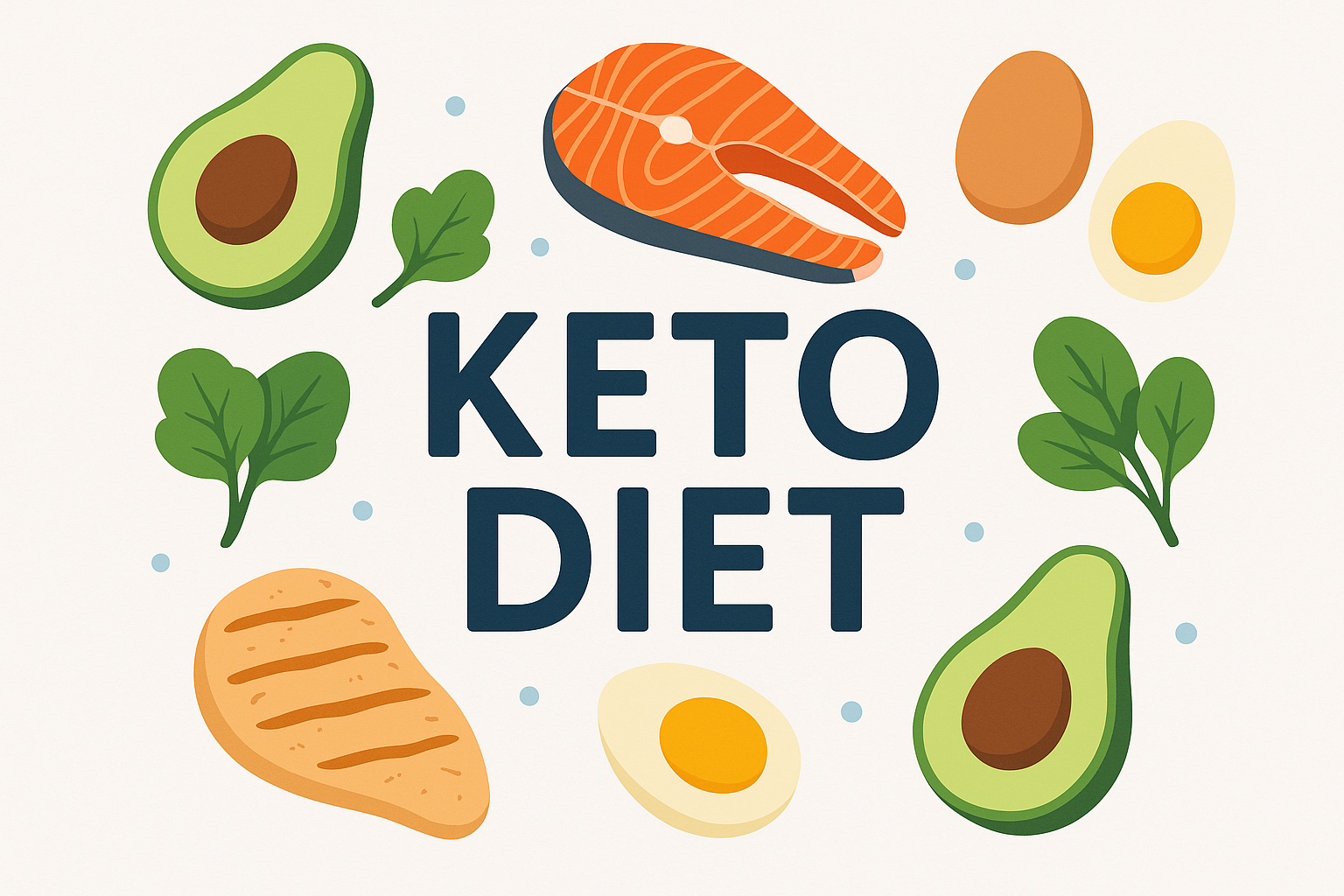Introduction
The keto diet, short for ketogenic diet, has gained massive popularity as a go-to weight loss solution and healthy lifestyle choice. Centered around low-carb and high-fat consumption, the keto diet changes the way your body uses energy—shifting from carbs to fats as its primary fuel source. This metabolic state, known as ketosis, can lead to numerous health benefits, from fat burning to improved brain function.
What is the Keto Diet?
The ketogenic diet is a low-carb, high-fat diet that drastically reduces carbohydrate intake and replaces it with fat. This reduction in carbs puts your body into a metabolic state called ketosis. When this happens, your body becomes efficient at burning fat for energy. It also turns fat into ketones in the liver, which can supply energy for the brain.
Unlike traditional diets that emphasize calorie restriction, the keto diet focuses on macronutrient composition. Typically, a standard ketogenic meal plan consists of:
– 70% fats
– 20-25% protein
– 5-10% carbohydrates
Table of Contents
Health Benefits of the Keto Diet
The keto lifestyle has been associated with a wide range of health benefits, beyond just weight loss. Here are some science-backed advantages:
1. Weight Loss
One of the most common reasons people try the keto diet is for effective weight loss. By eliminating carbs and increasing fat intake, your body enters ketosis and begins to burn stored fat more rapidly. Many studies show that a low-carb diet like keto can lead to significant weight loss, even without counting calories.
2. Improved Mental Focus
Ketones are a great fuel source for the brain. A keto meal plan has been reported to enhance mental clarity, focus, and energy levels. Many people experience reduced brain fog and more consistent energy throughout the day.
3. Blood Sugar and Insulin Control
The ketogenic diet may help manage type 2 diabetes by improving insulin sensitivity and lowering blood sugar levels. Some individuals have even been able to reduce or eliminate their diabetes medications under medical supervision.
4. Reduced Inflammation
A high-fat, low-carb ketogenic diet may help reduce inflammation in the body, which is linked to numerous chronic conditions such as heart disease, arthritis, and certain cancers.
Keto Food List: What to Eat and What to Avoid
Following the keto diet means choosing foods that are high in fat and very low in carbs. Here’s a keto food list to help you get started:
Keto-Friendly Foods:
– Meat: Beef, chicken, turkey, lamb, bacon
– Fish: Salmon, tuna, sardines, mackerel
– Eggs: Whole eggs with yolk
– Healthy Fats: Avocados, olive oil, coconut oil, butter
– Low-Carb Vegetables: Spinach, kale, broccoli, cauliflower, zucchini
– Nuts and Seeds: Almonds, chia seeds, flaxseeds
– Dairy: Full-fat cheese, heavy cream, Greek yogurt (unsweetened)
Foods to Avoid:
– Grains: Bread, rice, pasta, oats
– Sugar: Soda, cakes, cookies, sweets
– Starchy Vegetables: Potatoes, corn, carrots
– Fruits: Bananas, apples, oranges (opt for berries in moderation)
– Processed Foods: Chips, fast food, packaged snacks
How to Start the Keto Diet
Starting a keto diet plan can feel overwhelming at first, but breaking it down into simple steps can help:
Step 1: Educate Yourself
Before you begin, learn the basics of how to start keto—from macros and meal prep to recognizing symptoms of “keto flu.”
Step 2: Clear Out the Carbs
Clean out your pantry and remove high-carb temptations. Stock up on keto staples like oils, eggs, meats, and leafy greens.
Step 3: Plan Your Meals
Use a ketogenic meal plan for the first few weeks. This ensures you’re eating the right macro balance and staying in ketosis.
Step 4: Drink Water & Add Electrolytes
When carbs are restricted, your body excretes more water and minerals. Drink plenty of water and supplement with sodium, potassium, and magnesium.
Step 5: Monitor Your Progress
Keep track of how you feel, your weight, and possibly use keto test strips to measure ketone levels in your urine.
Potential Side Effects
As with any diet, some people experience side effects during the first few days—commonly referred to as the “keto flu.” This may include fatigue, headaches, and irritability, but these symptoms usually subside within a week.
To reduce the impact, stay hydrated and make sure you’re consuming enough salt and minerals. Always consult your doctor before starting a new diet, especially if you have any medical conditions.
Final Thoughts
The keto diet offers a powerful way to improve your health, boost energy, and promote fat loss. With the right planning, a balanced keto meal plan, and consistent effort, many people have transformed their lives using this approach. Whether your goal is weight loss, better focus, or simply a healthier lifestyle, keto could be the key to unlocking your full potential.

